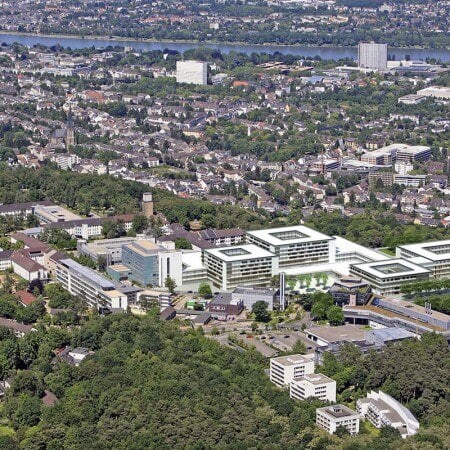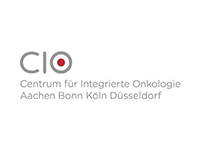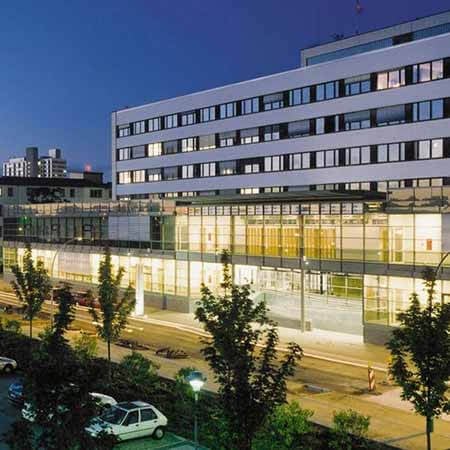The treatment for epilepsy is aimed at controlling seizures up to the achievement of remission, which is identified by the absence of seizures for 12 months or more. Proper epilepsy care can help to achieve stable remission in about 70% of people with epilepsy.
Content
- Specifics of seizures
- Treatment options for epilepsy
- Conservative therapy
- Surgery
- The vagus nerve stimulation
- Treatment of children with epilepsy
- Epilepsy treatment in European hospitals
- The cost of treatment
- How to start the treatment in European hospitals?
Specifics of seizures
The symptoms present in people diagnosed with epilepsy are extremely varied and depend on which part or parts of the brain are affected by epilepsy and what causes it. In the vast majority of cases, the manifestations of epilepsy are short-lived and may appear in the form of seizures affecting the person's motor system. At the same time, it may be uncontrollable movements of individual muscles or expanded seizures. In other cases, epilepsy may affect mental functions. During seizures, a person may experience unusual smells, or feel like the body changes its proportions, while before a seizure, a person may even get a feeling about its onset.
Certain manifestations of epilepsy are conditioned by the types of seizures, but it is not enough to determine which types of seizures are present, it is important to get information about what causes epilepsy.
One of the most common types of epilepsy in adults is symptomatic epilepsy. This term combines all epileptic seizures that have occurred after exposure of the brain to a specific factor. If seizures occurred after a brain injury or stroke, they are referred to as the symptomatic form of epilepsy.
Epilepsy is a pathology of the central nervous system that is characterized by recurrent seizures.
Treatment includes ketogenic diet, anti-epileptic drugs, surgery and deep brain stimulation.
Cost of conservative treatment is from €2,807. You can find other prices on the Booking Health website.
The best hospitals in Europe are:
- University Hospital of Ludwig Maximilian University of Munich
- University Hospital Rechts der Isar Munich
- Helios Hospital Krefeld
- Clinic of Advanced Biological Medicine Frankfurt-am-Main
- University Hospital Frankfurt-am-Main
Tonic clonic seizures represent the type of epilepsy that people first imagine when hearing the word. At the beginning of such seizures, there is a cramp of the vocal cord muscles and a person emits something like a cry. Going further in seizures, the person's limbs start to twitch. Such seizures usually do not last long.
After the seizure, the person may feel drowsy and agitated, and in need to rest. The person needs as much attention and care in the aftermath of seizures as they do during the seizure itself. If tonic clonic seizures last more than 5 minutes, emergency medical care is necessary.
Treatment options for epilepsy
A doctor usually decides to start treatment when a patient has a confirmed diagnosis of epilepsy. The medical diagnosis of epilepsy is established when a person had at least two unprovoked seizures at intervals of at least 24 hours and based on the data obtained during diagnostics.
The choice of therapy always begins with an accurate diagnosis and determination of the type of epilepsy. This is important because for each form of epilepsy there is a special algorithm of therapy and medication that is suitable for it.
However, the mainstay of epilepsy treatment is drug therapy that implies various treatments with antiepileptic medication. Unfortunately, in some cases, the severity and frequency of seizures cannot be corrected by the therapy indicated to the patient. Despite adequate high doses of medication, their combination, and possible emerging side effects, seizures do not disappear completely. Such types of epilepsy are poorly amenable to medication. Despite this, most patients with epilepsy resistant to drug therapy must take antiepileptic drugs. The use of therapy in these cases alleviates the course of epilepsy and reduces the frequency of seizures.
In addition to medication, there are alternative ways to control epilepsy. These usually include surgery (an intervention on the brain) and the method of the vagus nerve stimulation. In some cases, the use of antiviral drugs is used (if epilepsy has developed due to viral infection), hormone replacement therapy, ketogenic diet, and other methods. All these therapies have clear indications and contraindications, so before using them, it is mandatory to consult a doctor and assess their effectiveness.
Conservative therapy
Among the forms in which antiepileptic medication can be given, there are not only tablets and capsules. A special place in epilepsy therapy is occupied by preparations in the form of solutions or drops, which are convenient to use in the treatment of children with epilepsy. There are also injectable preparations used to quickly stop epileptic seizures, and in cases where the use of other forms of medication is not possible.
In the first few weeks of conservative therapy, depending on the type of treatment prescribed, the following rather typical, but unwanted effects may be observed, including fatigue, upset stomach, and dizziness. To minimize the undesirable effects, the doctor prescribes therapy with a gradual dosage increase, depending on the patient's health condition and the drug chosen, in about several weeks or months.
Some anticonvulsants can cause cognitive problems such as impaired concentration, memory, and thinking. All anticonvulsants reduce the excitability of cortical neurons and alter their normal functioning. Cognitive problems are known to occur more often with a combination of two or more drugs than with monotherapy. This can interfere with the schooling of children or a job of a person with epilepsy. In some cases, the doctor may decide to change the therapy or adjust the dosage.
Throughout treatment, drug interactions with other substances should be taken into account. For example, by interacting with other types of drugs, an antiepileptic drug may decrease its effectiveness or, conversely, increase in concentration, which can be dangerous for the patient’s health. This is especially important to know about, if patients are taking medications to treat cardiovascular diseases, forms of birth control, etc. Therefore, you should inform your doctor about the use of any drugs and dietary supplements, including herbal ones.
Surgery
If epilepsy cannot be controlled with medication, the patient may undergo a neurosurgical intervention in the form of brain surgery. The development of epileptic seizures is associated with the occurrence of excessive activity in a particular part of the brain. This area is called the epileptogenic focus. Later, excitation from the focus spreads to other areas of the brain, and the person has epileptic seizures. The surgery is about limiting the spread of excitation from the focus or eliminating the epileptogenic focus completely by removing the part of the brain where the seizures originate.
The intervention can be limited by incisions on the surface of the brain or by dissecting the corpus callosum. The corpus callosum is an area of nerve tissues connecting the right and left hemispheres. Partial or complete dissection of the corpus callosum prevents nerve stimulation from spreading, which prevents a seizure, and removal of part of the brain eliminates the source of seizures.
Prior to epilepsy surgery, it is important to determine the location of the epileptogenic focus as accurately as possible. Surgery can be performed regardless of the age of the patient, but is not indicated for all types of epilepsy and seizures. Any surgery carries a risk of complications, and in the case of neurosurgical treatment, it is very real. Despite the challenges and risks, surgery is an effective way to treat epilepsy resistant to conservative treatment, including the one in children and adolescents.
The vagus nerve stimulation
Surgical treatment can help if the epileptogenic focus is located in a certain area of the brain and is diagnosed. Unfortunately, this method is not suitable for treating epilepsy with many focuses of activity. In such cases, the method of the vagus nerve stimulation is used.
The stimulation of the vagus nerve has been used to treat epilepsy resistant to conservative therapy for more than 10 years, but so far doctors and scientists cannot fully explain the mechanism of its action. Despite this, in practice, the method is highly effective and beneficial for the health of children and adults with epilepsy. The vagus nerve stimulation is applied when drug therapy is proved ineffective and surgical treatment is contraindicated or has failed to relieve seizures.
Treatment of children with epilepsy
Treatment of children with epilepsy usually begins with drug therapy using a single drug. The treatment with a single drug (monotherapy) is preferred in most clinical cases, but the final decision in each case is made by the physician. With monotherapy, it is easier for the physician to understand the effects of a drug on epilepsy manifestation. If medication changes are made, doctors usually prefer to do it gradually. By reducing the dose of the first drug, the doctor increases the dose of the second drug at the same time. If therapy with an antiepileptic drug is stopped abruptly, it may cause seizures to come back or become more frequent.
In addition to the choice of medication, it is also important that the regimen and method of taking it are convenient for children. Medication that should be taken once or twice a day will be better perceived than the one needed to be taken more often.
In addition to taking medications, a ketogenic diet can be effective in cases of childhood epilepsy. Studies have shown that a diet composed primarily of healthy fats (preferably plant-based), dramatically reduces the frequency of seizures making living with epilepsy easier for children. A ketogenic diet significantly increases the amount of healthy fats and decreases the proportion of carbohydrates consumed. The intake of increased amounts of fats leads to their oxidation and the accumulation of ketone bodies in the body. A ketogenic diet creates an energy reserve for neurons: they become more resistant to the excessive electrical activity typical for epilepsy.
Epilepsy treatment in European hospitals
Every year, thousands of patients with epilepsy from all over the world come for treatment in European hospitals to receive professional medical care. When it comes to diagnosing and treating epilepsy, European hospitals are considered the best.
European hospitals provide medical care for patients of all ages and some of them specialize in the treatment of epilepsy in children. At European hospitals, patients are offered the full range of diagnostics and treatments for epilepsy being currently the latest in medicine.
Here is a list of the best European hospitals:
- University Hospital Bonn, Germany.
- Beta Klinik Bonn, Germany.
- Bundeswehr Academic Hospital Berlin, Germany.
- Epilepsy Center Bethel Bielefeld, Germany.
- Charite University Hospital Berlin, Germany.
You can find more information about the mentioned hospitals on the Booking Health website.
The cost of treatment
The cost of treatment for epilepsy varies and is conditioned by the type of therapy required for a specific diagnosis.
But generally, the price of epilepsy diagnosis starts from 1,596 EUR; the price of both diagnosis and conservative therapy starts from 2,807 EUR; the cost of treatment of epilepsy with deep brain stimulation starts from 20,525 EUR; the cost of treatment of epilepsy with epilepsy surgery starts from 28,886 EUR.
Feel free to contact Booking Health for more information about the prices for epilepsy treatment.
How to start the treatment in European hospitals?
Booking Health offers a wide range of services that make the organization of epilepsy treatment abroad easier for the patient.
Booking Health will take care of negotiations with the chosen hospital, translation of your medical documents, booking airline tickets and accommodation, and so much more.
You will get all the necessary information about how to start the treatment if you leave your request on the Booking Health website.
Authors:
The article was edited by medical experts, board-certified doctors Dr. Nadezhda Ivanisova and Dr. Sergey Pashchenko. For the treatment of the conditions referred to in the article, you must consult a doctor; the information in the article is not intended for self-medication!
Sources:
National Library of Medicine
European Academy of Neurology
Healthline













